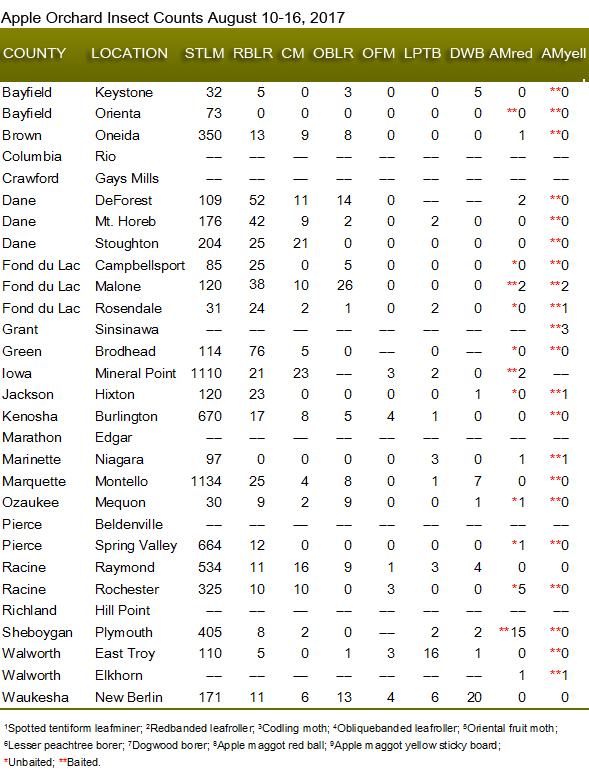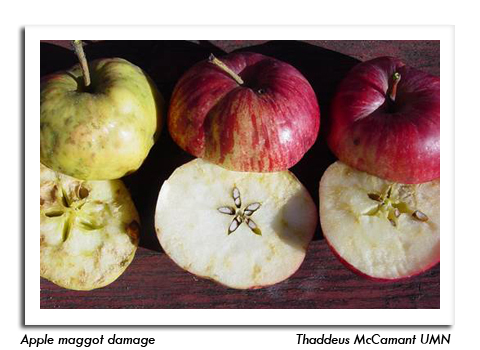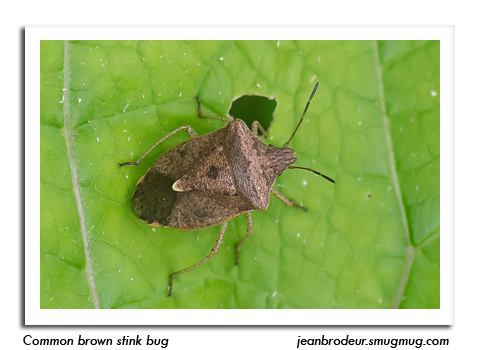
 |
|
|
Fruits
Volume 62 Number 16 Date 08/17/2017 CODLING MOTH - Significant moth flights are still occurring in some eastern and southern Wisconsin locations. Above-threshold weekly counts were registered in 10 of 20 reporting orchards during the week ending August 16. Assessing larval damage is recommended before the end of the month to forecast first-generation codling pressure next season. According to Orchard IPM Specialist John Aue, captures higher than 10 moths per trap per week should result in visible fruit damage at harvest. If no damage is observed this fall or less than 1% of fruits are affected, then moth pressure is probably coming from outside of the orchard. APPLE MAGGOT - Counts were generally low again this week and ranged from 1-5 per trap, with the exception of 15 flies captured on a baited red sphere trap in Sheboygan County. This season's AM emergence has been variable but mostly light. Apple growers should continue to monitor AM traps through the first week of September since the flies are still active and could cause problems in late cultivars. SPOTTED TENTIFORM LEAFMINER - The third and last flight of the season has likely peaked in most apple orchards. Moths have been very abundant at some locations during this flight, with a high count of 1,662 moths registered last week at Mineral Point in Iowa County and an additional 1,110 moths captured this week. Another larval generation should be anticipated in September. The third-generation pupae that develop by fall will remain dormant in the mines and overwinter inside of leaves on the ground. Apple growers who have recorded large numbers of third brood moths this month can assess infestations in September by monitoring orchard perimeters for leaf mines. STINK BUG - Late-season activity is expected to increase in the next 2-3 weeks, especially in orchards with ground covers or adjacent to uncultivated areas. Apple growers should begin scouting fruits for the dimples or dark, irregular circular depressions typical of stink bug feeding and flag sites with multiple depressions on the same fruit or tree. Damage by this pest is often limited to specific areas in the orchard and depending on the distribution of the population, spot treatment may be adequate. Apple growers should not mow cover crops or weeds when stink bugs are present to prevent the insects from moving up into the trees. -- Krista Hamilton, DATCP Entomologist 




|
|
|